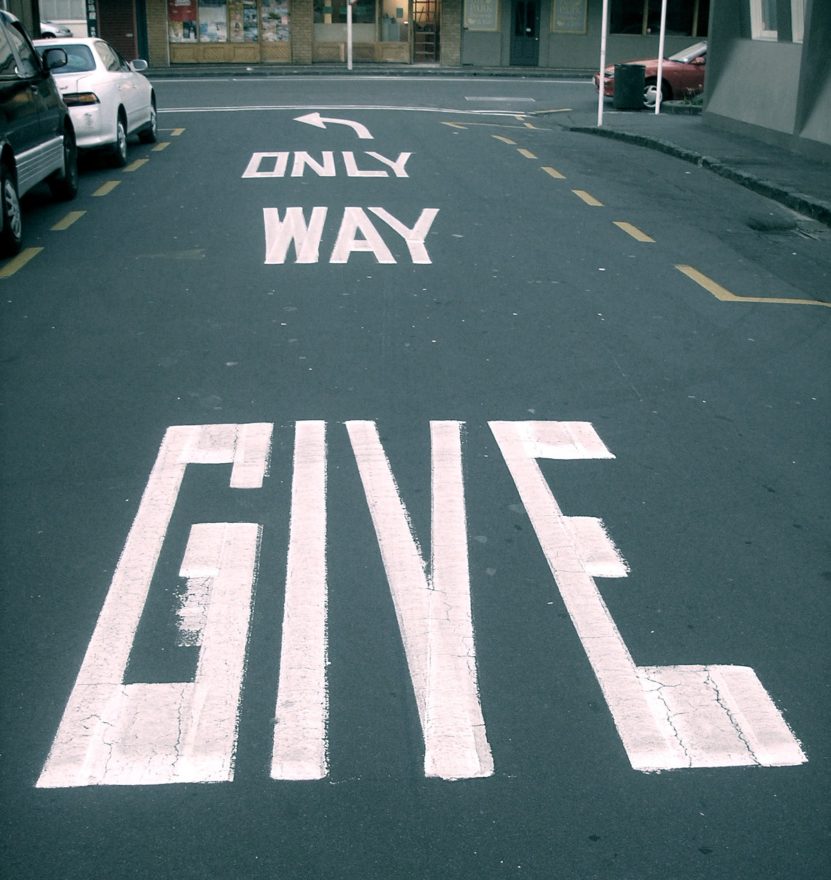Is Charitable Giving part of your financial plan? It is part of ours. At Good Life Wealth Management, we donate a minimum of 10% of pre-tax profits annually. We believe that charitable giving is the ultimate expression of financial freedom. Having the ability to help others and make the world a better place, without fear of running out of resources for ourselves, is perhaps the best definition of financial independence. So many people have helped us get to where we are today, it is only right that we look to make a difference through our work, our time, and our financial support.
The IRS rules behind deducting your donations are not well understood by most taxpayers. There are strategies which can make your giving dollars go farther. Even if you have been making charitable gifts for many decades, chances are that you will learn something new in this article.
1) Qualified Charities. If you are wondering whether your donation to a particular organization is tax-deductible, check the IRS database: Exempt Organization Select Check. There are some organizations, such as political parties or candidates, fraternal organizations, chambers of commerce, or lobbying groups, which are not eligible for tax-deductible donations. Donations to individuals are not tax deductible, either.
2) Deduction limits. Charitable donations are part of itemized deductions. If you take the standard deduction, you are not getting any tax benefit from your charitable giving. If this is the case, try alternating years of itemized and standard deductions. Aim to “stuff” all your itemized deductions into one year. For example, you can pay your property taxes in January and then again in December, which puts two years of deductions into one year for tax purposes. Do the same with your charitable giving
There are limits to how much you can deduct, based on on your Adjusted Gross Income (AGI). If your donations are more than 20% of your AGI, you need to know these rules:
- For most charities, you can deduct donations up to 50% of AGI.
- If you donate Capital Gain Property, the limit is 30%.
- For certain charities, including private foundations, veterans’ organizations, and non-profit cemeteries, the limit is 30%.
- Capital Gain Property donated to 30% organizations is limited to 20% of AGI.
- If you exceed these limits, the good news is that the excess will carry forward for the next five years.
Lastly, your itemized deductions – including charitable donations – may be reduced under the Pease limitations for high income earners.
3) Cash Donations. Cash donations under $250 may be substantiated with a cancelled check or credit card statement. Donations over $250 require an acknowledgement from the organization. Please note that if you receive anything in return for your donation (event tickets, T-shirt, etc.), the value of the goods or services received must be subtracted from the value of the donation. Most tickets to charity events, raffles, or contests are non-deductible.
4) Non-Cash Donations. Non-Cash Donations are an area of scrutiny for the IRS, and the record keeping requirements are more strict. You are limited to the fair market value of goods donated, and generally, not your cost basis in the items donated.
- Under $250. A receipt from the organization, including a “reasonably detailed description” of the property. You may determine the value, but need to document how you calculated the value.
- $250-$500. You must have a receipt from the organization, including the value of the items donated.
- $501-$5,000. In addition to the requirements above, you must document how you acquired the property, when, and your cost basis. If you are donating an item to a charity auction, the receipt from the organization should indicate the amount that the item sold for, which could differ significantly from your opinion of value.
- Over $5,000. You must also obtain a written appraisal from a qualified, independent appraiser.
5) Appreciated Securities. If you are planning on making larger donations, it may be worthwhile to donate appreciate securities (shares of stock, mutual funds, etc.) rather than making a cash donation. You still get the full value of your donation (and the charity gets the full amount), but you also will avoid paying capital gains tax on those securities. Since the charity is a tax exempt organization, they pay no capital gains when they sell your securities.
For example, consider a donation of $10,000. You could donate cash, or a $10,000 of a fund. Yous cost basis in the fund is $4000, so you would have a gain of $6000. At a 15% capital gains rate, you would avoid $900 in capital gains. If you are in the top bracket, you pay 23.8% for long-term capital gains, so you would save $1,428 in this example.
If you want, you can put the $10,000 cash you were planning to donate into your brokerage account and immediately repurchase your shares. There’s no waiting period or wash sale on donating gains! Now you have made your donation as planned, avoided some capital gains, and still have the same number of shares, but have reset your cost basis higher. Win-win-win.
6) IRA RMD. Last year, Congress made permanent the rules on Qualified Charitable Distributions from your Individual Retirement Account. If you are over age 70 1/2, you can make a distribution directly from your IRA to the charity of your choice, in fulfillment of your Required Minimum Distribution. I wrote in detail about who should use this benefit here: Qualified Charitable Distributions From Your IRA.
7) Donor Advised Fund (DAF). Also called a Charitable Gift Fund, a DAF is a charitable fund that allows you to make a tax deductible donation today, invest those funds, and distribute money to charities of your choice in the future. The DAF is itself a public charity, so your creating and funding an account is tax-deductible. It is also permanent and irrevocable, so plan carefully! Once funded, you can purchase various investments, such as cash, mutual funds, or other securities.
A DAF is great if you have significant windfall in one year – for example, through the sale of a business or real estate – and want to plan ahead for future giving. For example, you could put $100,000 into the fund, and receive a $100,000 deduction this year. You can subsequently make donations for the next 20 or 25 years, if you wanted to. A DAF is often a better solution than setting up a private foundation for family giving. If you have a significant financial event, you may be pushed into the top tax bracket of 43.4%. If that happens, every $1000 you put into a DAF will save you $434 in taxes. If you were ultimately planning to give that money to charity in the future, it would be crazy to not look at keeping more of your money out of the hands of the IRS today.
While the gift to the DAF is irrevocable, you still control the disbursements from the account, so you can decide when, to whom, and how much you give. You may love a charity today, but 10 years from now may find another that you feel is more deserving. This may be preferable to donating a significant amount to one charity in a single year. A DAF is also a great way to involve your children or grandchildren in your family’s philanthropy.
Certainly the purpose of Charitable Giving is not to get a tax-deduction. But if the government is going to give us financial incentives to encourage our donations, we should take advantage of those opportunities. Significant tax savings today means that you will have more money left over to donate in the future. Why pay 15% to 43.4% (or 50%+ in California, New York, and other states) tax on each dollar you donate?
Many people prefer to leave gifts to charity through their will. While this has the advantage of making sure you do not run out of money while you’re alive, you lose the benefit of reducing your income taxes today. If you have more than enough money, it may be preferable to give while you are alive, to enjoy seeing the good your money can do. That will give you better tax benefits, and also avoids problems with your will.
I know of a deceased individual (not a client) who planned to leave several million to charity and “only” $1 million to each child. The children are contesting the will and besides tying up the money for years, attorney’s fees will end up reducing the proceeds by at least $1 million. This tragic situation of a contested will is all too common, but could be avoided with better planning and communication. That’s where professional advice can help.
How can we help you with your charitable planning?












